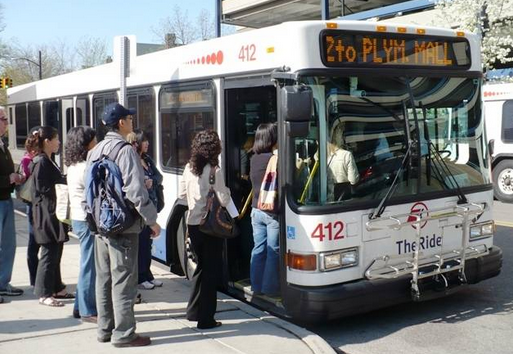Transit ridership reaches highest level since 1956, 10.7 billion trips
 Courtesy of USA TODAY by Larry Copeland: Ridership on public transportation last year grew 1.1% to 10.7 billion trips, the highest total since 1956, according to new data from the American Public Transportation Association.
Courtesy of USA TODAY by Larry Copeland: Ridership on public transportation last year grew 1.1% to 10.7 billion trips, the highest total since 1956, according to new data from the American Public Transportation Association.
Since 1995, transit ridership is up 37.2%, which outpaced the national population growth of 20.3%, says Michael Melaniphy, APTA president and CEO.
The nation’s trains, buses and commuter rail carried more trips last year than in 2008, when gas prices soared to $4-$5 per gallon and many were forced out of their cars by necessity. That year saw the highest ridership totals since 1957. “There’s a fundamental shift going on,” Melaniphy says.
“This isn’t a one-year blip. More and more people are deciding that public transportation is a good option.” Melaniphy says public transit systems in cities large and small, and in suburban and rural communities are seeing ridership increases.
“We’re talking about both red states and blue states here. They’re saying we want these (transit) investments made. The economy’s coming back, and people are saying, Man, I’m riding transit.” Alan Pisarski, editor of the Commuting in America series, says public transportation’s image is improving. “There are areas where there is a more positive view of transit,” he says.
“I think in some areas, people do have a more positive view.” He notes, however, that while transit carried more trips last year than at any time since the Eisenhower administration, its share of the transportation mode – that is, the percentage of commuters who take transit versus driving, walking, etc. – is still well below what it was in the 1960s, 1970s and 1980s.
In 1960, 12.1% of commuters took public transportation. That dropped to 8.9% 10 years later to 6.2% in 1980, Pisarski says.
By 2000, the percentage was 4.6%, but it rose at the end of the decade. Transit’s share of the transportation mode was 5% in 2012. “It’s probably not fair to expect them to do those kinds of numbers again,” Pisarski says.
“You’re talking about a society where probably 30% of the society didn’t own a vehicle. Now, less than 10% of households don’t have a vehicle, and only 3% of households with workers don’t have a vehicle.”
Category: Featured, General Update, Transit News










